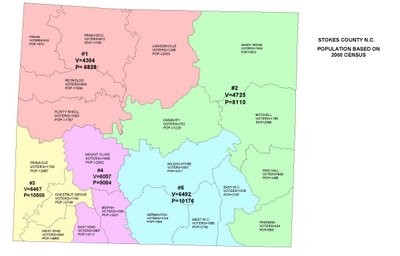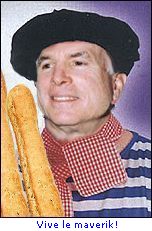By
Wesley Young for the
WSJ:
Most of the people in Winston-Salem's newest large minority group don't have to worry about learning English or running afoul of immigration laws. New estimates from the U.S. Census Bureau show that non-Hispanic whites appear to be a minority in Winston-Salem for the first time in the city's history. The bureau's figures for 2005 show that non-Hispanic whites made up 48.1 percent of the city's population that year.
The change came about as the city's Hispanic population increased by 10,222 people, and the city's non-Hispanic white population dropped by 9,226 since 2000, the estimates show. The black population in Winston-Salem also declined, by 3,210, but the Hispanic increase more than offset that drop, the estimates show.
"The bottom line for us is that urban America is getting more and more diverse," said Paul Norby, the city-county planning director. "I would say that the trend toward the increasing diversity of the population is something that is not unique to Winston-Salem. That same trend is happening in cities across the country."
It’s true that urban America is getting more and more diverse. That's fine. But, in Winston-Salem's case, its small tract of urban America is also becoming less and less representative of the socioeconomic breakdown of the greater area. That's why population numbers are falling, and — as much as I hate to say it — much of the blame falls on the city itself.
From the story:
Because the numbers are estimates, it is possible that non-white Hispanics are still barely a majority. And non-Hispanic whites could regain their majority status, at least temporarily, if the city's 2003 annexation plan takes effect. One court challenge is all that is left before the annexation becomes official. If it does, the non-Hispanic white population should increase to almost 51 percent. As this piece continues, lots of facts and figures are given. They essentially illustrate what's been said here before — most recently, I recall — by Steve. Many W/S residents are running for (and beyond) the city limits and the only way that the city can get the numbers back to how they were beforehand is to annex the areas where many of them have migrated to.
It may not have to be that way. Sure, many middle-class Americans are now used to (and enjoy) having a yard, mowing grass, cleaning gutters, etc. while dealing with some of the BS involved in living the suburban cul-de-sac life. But does Winston-Salem offer average-income families enough good options in residential property? Clearly, no. One look at the skyrocketing (and quite silly) prices of many W/S homes on the market reveals that quite well.
As people are being encouraged by the city to look downtown to live, work, and play — and hey, I'm awful tempted by the look, vibe, and possible convenience of those swanky/cool high-rise condos (no gutters to clean, for one thing) — the residences currently being built are priced quite high with (usually) only one to two bedrooms tops. For instance, posh One Park Vista has 1200 sq. ft. pads starting at a quarter-million and it goes up from there. Who can afford to live there (or can justify a small $250K living space)? A few well-to-do singles and a maybe a decent amount of retired, urbanite couples, that's who. And those who don’t find a rare gem of a home in town are most likely headed away from the city. This certainly doesn’t seem to encourage diversity, does it?
If the city wants the middle class tax base that they depend on to stay put, maybe they could offer (at least temporary) tax incentives for buying downtown property and encourage further development of a plethora of empty blocks and empty buildings with great residential potential. Secondly, instead of just reaching for the lofty goal of being a hip, mini NYC, they could encourage builders to construct a few affordable 3 bedroom/2 bath flats with a reasonable amount of amenities and ample parking. As enjoyable as living in town can be, Winston-Salem can't continue to be supported by the shrinking number of middle-class income earners and the few truly upper-middles who can justify the increased cost of living here.
That’s just my two cents.















